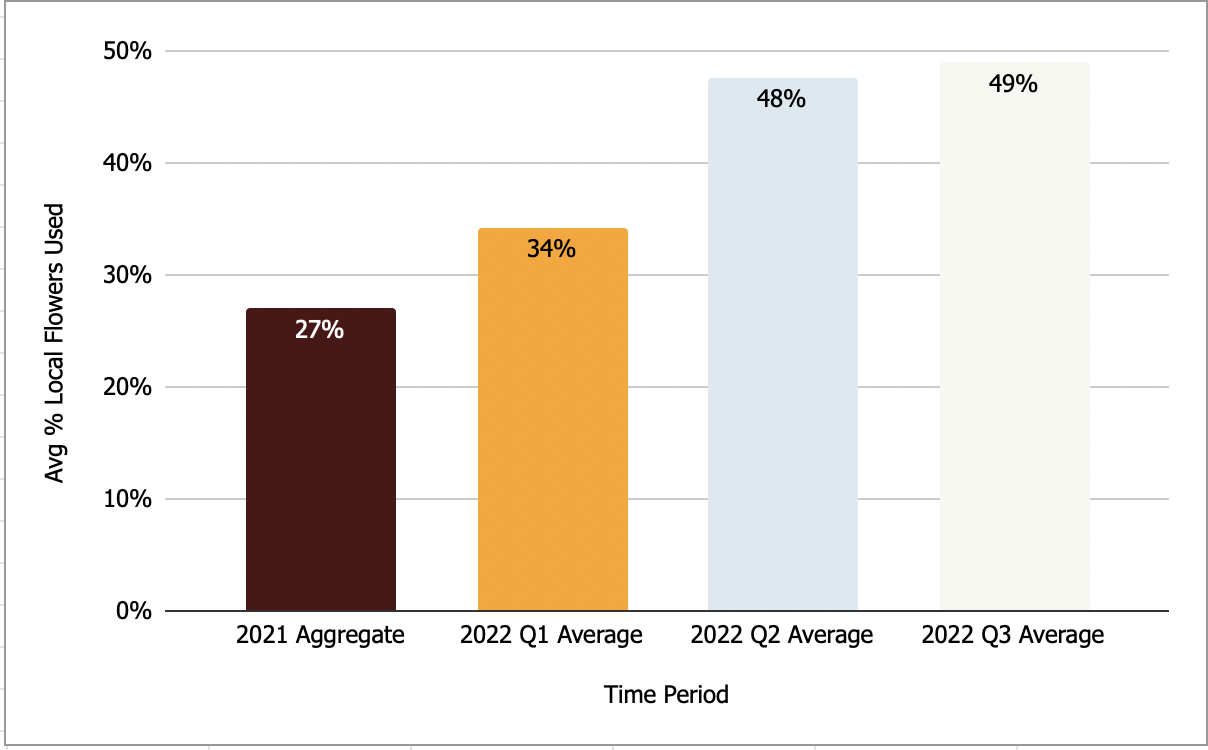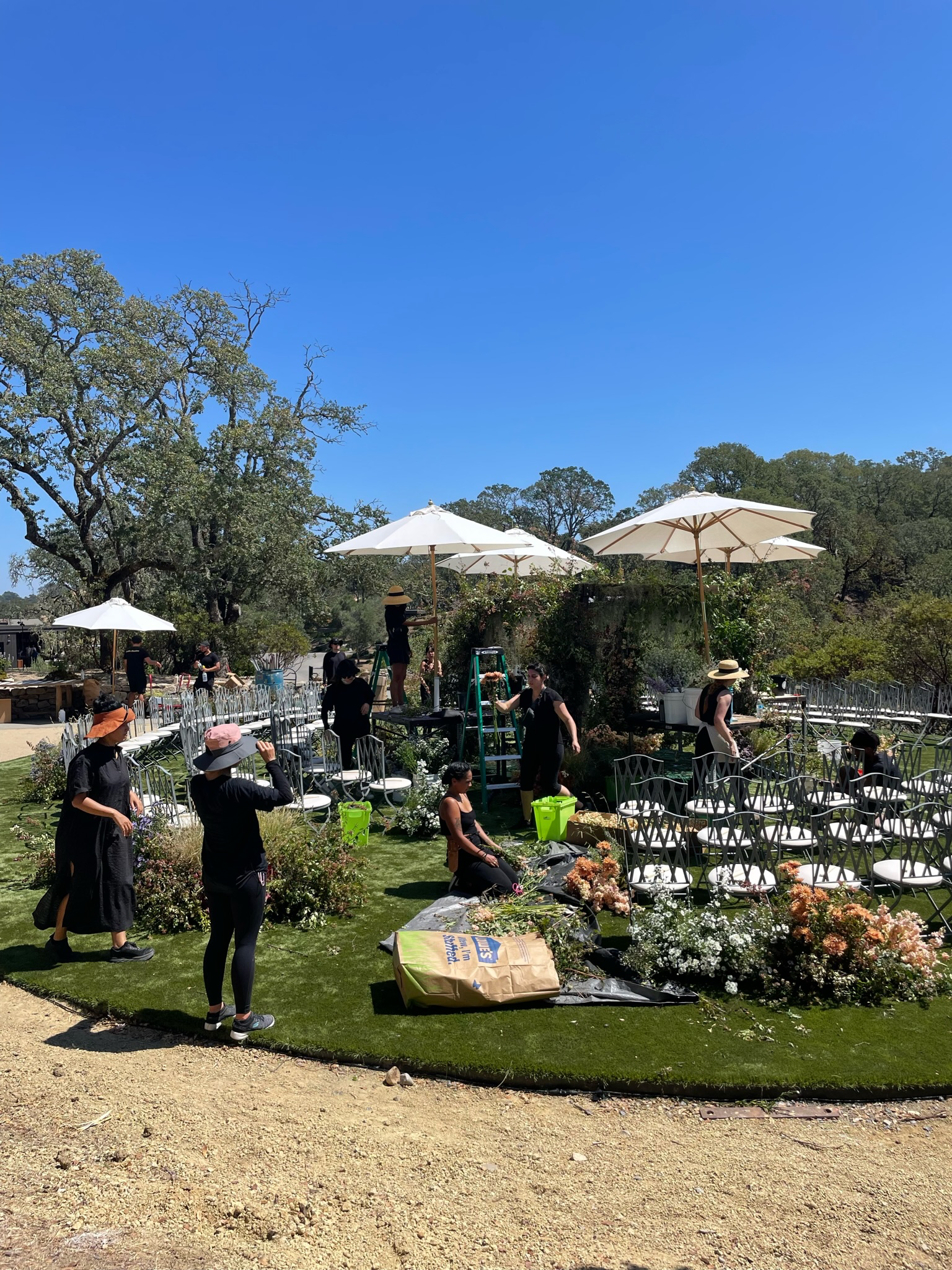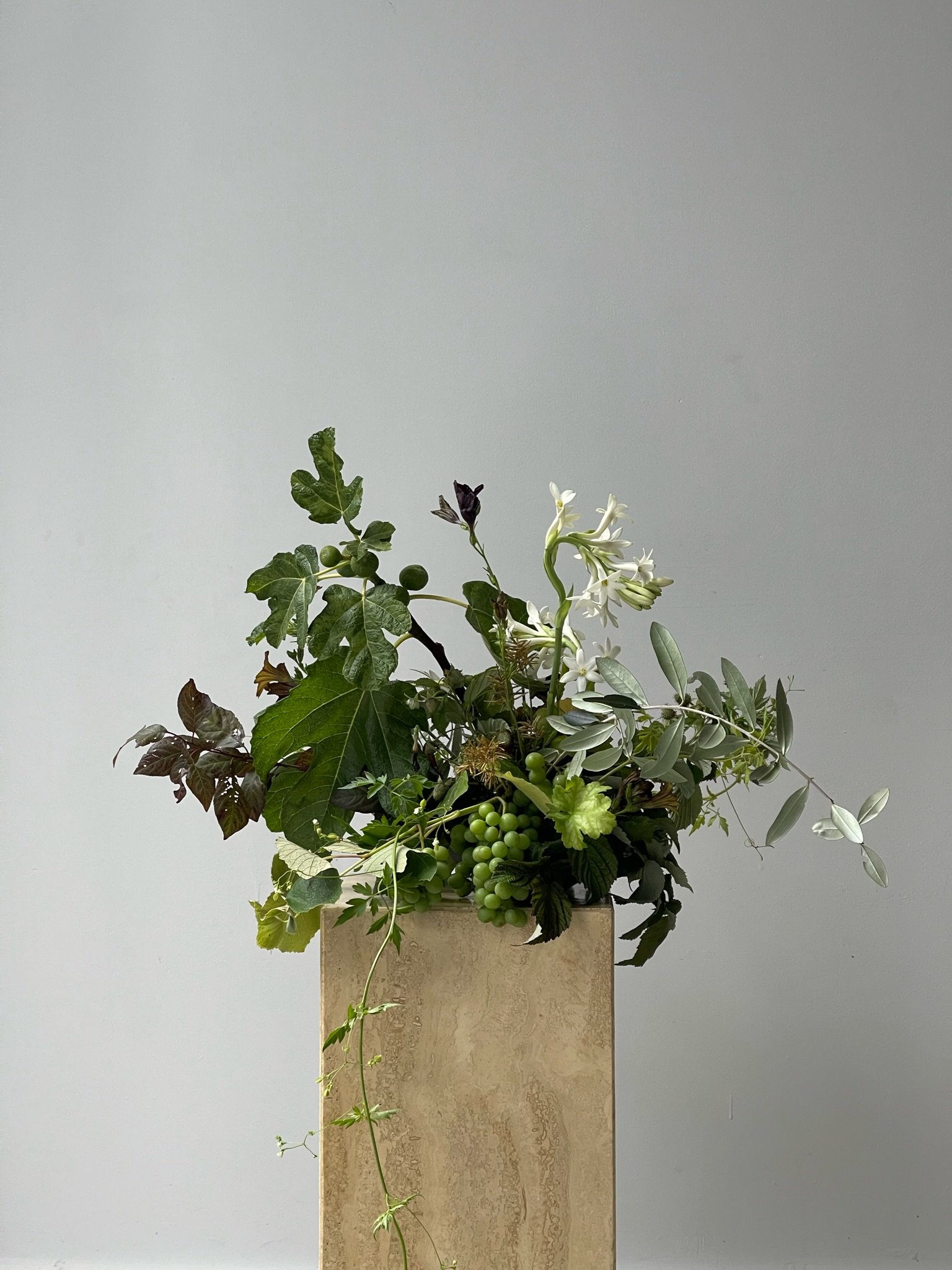SM IMPACT 2022: QUARTER 3
Extreme Work
I’m sure you’ve noticed it, too. The extreme weather we’ve faced nationwide this year has been hard to ignore. Doubly so if you’re used to working with the seasons, and the materials you work with are directly affected by climate.
The unending drought in California, as well as the frequent & sustained heatwaves have made it that much more challenging for florists to predict what will be in season. We’re needing to think on our feet, and making big substitutions the week of our events for this reason. Fortunately, our direct relationships with growers and wholesalers allow for close monitoring and forecasting much of the time. Flexibility and trust from our creative partners and clients has been increasingly important this season.
Hot San Francisco Summer – What?! Multiple 90℉ days are nearly unheard of in San Francisco. This was the first year that we required a flower cooler – and we’ve been at this for nearly a decade! On particularly hot weekends, we reevaluated our designs and flower choices for their heat tolerance – what would still look good by the time guests sat down to dinner? We leaned heavily on native plants this season, particularly in our installation work.
As for cut material – we know all too well the feeling of dread when a chunk of your flower order is no longer available. This year, we’ve had to make a list of back-ups for our back-ups. We keep hearing from farmers and wholesalers that volatility in temperature and rainfall are to blame for these dizzying swings in product availability. This unpredictability means even the availability of mainstays are called into doubt. Local saponaria, which can be counted on for late spring to early summer designs, all but dried to a crisp by June.
Native Californians are quite familiar with severe drought conditions and adjusting our daily practices to be water-wise. This summer, we started thinking about how our flower sourcing could be a bit more water-wise as well. We reached out to growers in the region to learn more about which flowers or plants were the most efficient to grow. We learned from Kelly at Do Right Flowers that perennials tend to be more water wise – their deeper, more established roots require less water. Another water-wise choice could be cover crops, such as buckwheat and favas. Cover crops are essentially dry-farmed, relying on rainfall and not much else. Needless to say, we combed through the seed catalogs armed with this insight, looking for intriguing perennials and cover crop seeds that could enrich our designs.
So, what’s a florist to do?
We can stay curious about growing conditions and farming practices
We can shift toward using more water-wise ingredients such as perennials and cover crops in our designs
We can push our creativity to design high impact, low footprint arrangements
We can look at our design work more critically to tease apart the nuances and role of each ingredient, so that we are intentional and confident as we make substitutions
We can build trust with our clients by communicating our sourcing realities and well-considered substitutions
Sustainability Goals:
Use 50% or more of the hard goods in our inventory supplementing with rentals for our events by 2024.
Source 40% locally grown flowers across our events by 2024
Compost a minimum of 50% of our floral waste across our destination events by 2024.
For California events, in accordance with state legislation, we will compost 100% of floral material from our events effective immediately.
By the Numbers:
As we collect more data, we are able to compare our values from multiple time periods. For this analysis, we are comparing 2021 aggregate numbers with 2022 Q1, Q2, and Q3 averages.
Sourcing: Local Flowers
Figure 1. Compared to Quarter 1 (2022) and Quarter 2 (2022), Quarter 3 (2022) saw a higher percentage of local flowers used per event. Per our first impact report, we define local flowers as ones that are grown in-state, wherever our event location may be. In Quarter 3, we saw a slower increase in the percentage of local flowers than quarters past because of an event at the Utah/Arizona border with a particular client look that was too challenging to source flowers locally for.
Sourcing: Hardgoods
Figure 2. As our inventory continues to grow we are able to use our own hardgoods for events and purchase less. In quarter 3, we reused or rented an average of 100% of our hard goods inventory rather than purchase new vessels during the first two quarters of 2022 and 2021 as a whole. As a team, we referenced our organized digital inventory to assess our options and sought out rental resources to supplement.
End of Life: Landfill Diversion
Figure 3. Quarter 3 saw a rise in the percentage of landfill of all event waste generated in comparison to 2022 quarter 1 and 2 and 2021 in aggregate. We were able to compost and reuse 86% of our floral materials after events. The uptick in landfill waste is due to a few larger productions during quarter 3 that required us to increase the amount of supplies and resources needed to complete the event.
Additional Metrics:
We’re also sharing the additional metrics of: personnel miles traveled, waste generated, estimated flower travel mileage and carbon emissions generated from the third quarter of 2022.
Miles Traveled:
This quarter our team traveled 9042.3 miles! This includes our staff’s travel to events and the trucking required for our events. While half of our events this reporting period occurred in the Bay Area, close to our home studio, we also traveled to Los Angeles, Utah, and Carmel Valley. July-September event travel generated 8.23 tons of CO2.
Composted Material:
In the third quarter, our event productions produced 1,423 total lbs of waste. We were able to divert 1,155 lbs (roughly 81%) through composting, reusing, and upcycling materials by drying. Excitedly, we had a composting ‘first’ this quarter – our event waste was sent to a vermicompost worm farm after a job near Phoenix, Arizona.
We were able to compost at least a portion of all our events this past quarter with our compost partners. In our quest to make composting frictionless, we’ve compiled our composting resources into an open compost directory–and we invite you to add to this shared resource!
This summer, we were delighted to cut delicate arugula flowers, nasturtium, apple of peru, and other “weeds” from our studio garden for our event designs. Leftovers from our efforts to include more drought tolerant plants in our designs have happily found a home next to vegetables used in our summer salads. The grape vine-covered alleyway behind our studio has even converted into our very own Studio Mondine ‘nursery’, housing all the grasses, trees, and shrubs we plan to use again and again.
Estimated Travel Mileage:
Relying on self-reported flower vendor data and backed by published studies on the environmental impact of the cut flower industry, we have set the average mileage of a bunch of flowers from its growing location to its final destination (venue, market, our studio etc.) as approximately 13,201 miles.
As many indoor flower farms are located in Bogota, Colombia, we’ve now defaulted our “starting location” for each imported stem here.
The final destination, we’ve adjusted for each of our celebrations based on the location of the venue.
In some cases when this information is known, we also include a stop at the Holland Flower auction where many flowers pass through on their sales and inspection processing. In comparison, flowers sourced through local flower hubs travel a mere 50 miles on average between growing location and flower market.
While this estimate does provide helpful insight, we are still operating under a few big assumptions.
We assume that the flowers within our order are ‘carpooling’ and thus only making 1 flight from the growing location(s).
We have no information about the growing conditions, water and energy usage at these farms, nor do we have information about the commute the farm workers themselves make.
Considering the missing information and the assumptions we must make, we accept that the true impact of importing cut flowers is far more extensive. With our goal to include more local flowers in our designs, our hope is that the required travel mileage for flowers reduces significantly, and we gain more insight into how they are grown.
Progress, Not Perfection
Looking at the data from last quarter in sum, it’s evident that we’re making slow and steady progress toward our sustainability goals– none of which would be possible without the support of:
Our Clients – We are fortunate to work with clients who champion sustainability, and are enthusiastic to see in-season, local botanicals in their designs
Our Creative Partners – We benefit directly from our creative partners, including event planners, venue coordinators, and catering colleagues, who relay our mission and values to clients on our behalf
Our Floral Vendors – The abundance and diversity of material we enjoy in our design work is directly tied to the work that our floral vendors do, whether they be farmers or wholesalers.
Our Freelance Team Members – We are thankful to our team of freelancers for living out our Studio values on event production and installation days
Buoyed by the support of our community, we continue working with intention, one event at a time. With this new transparency is a newfound freedom that allows us to reimagine our work. The reminder for ourselves is that it’s progress, not perfection that we seek and celebrate.









